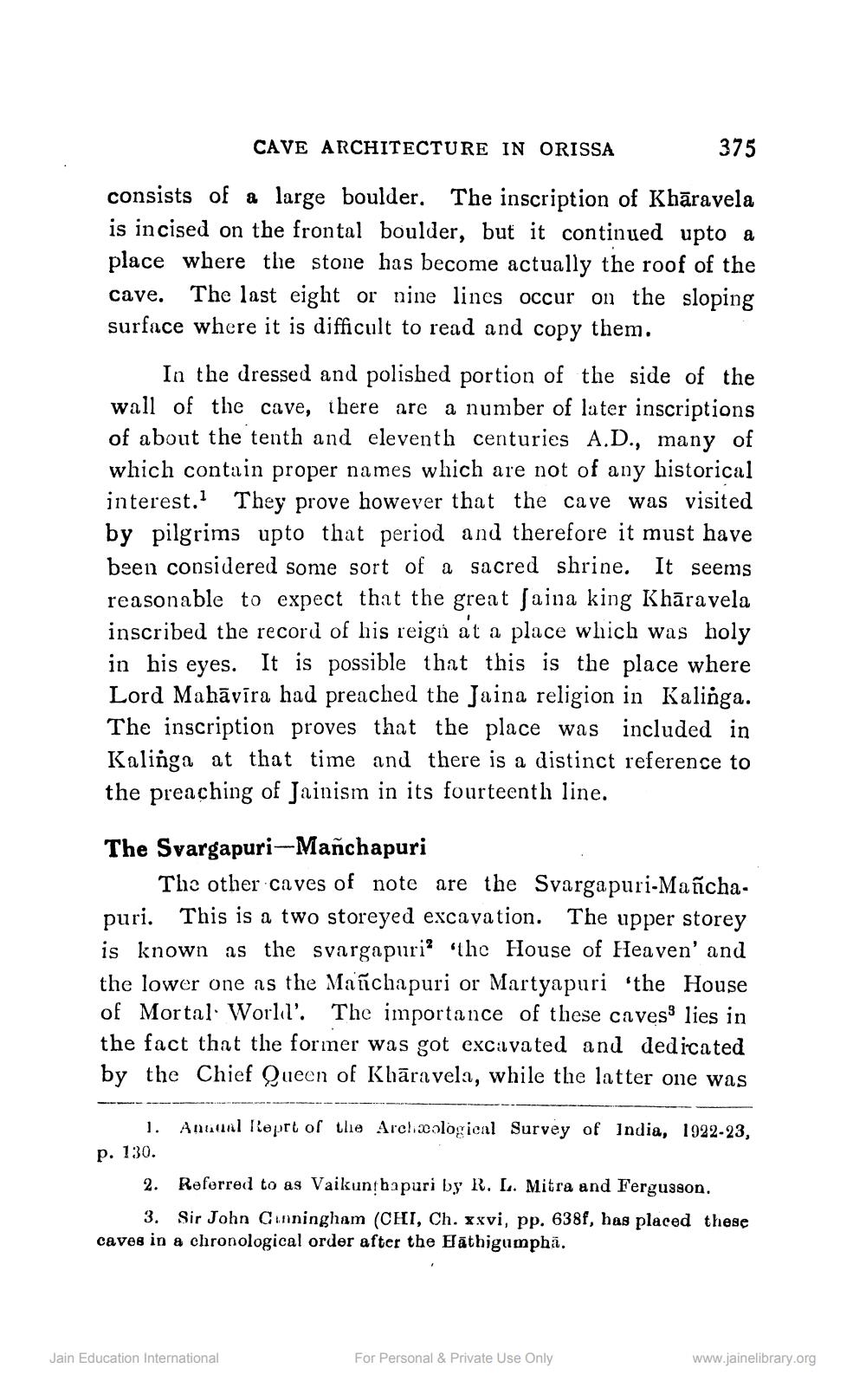________________
CAVE ARCHITECTURE IN ORISSA
375
consists of a large boulder. The inscription of Khāravela is incised on the frontal boulder, but it continued upto a place where the stone has become actually the roof of the cave. The last eight or nine lines occur on the sloping surface where it is difficult to read and copy them.
In the dressed and polished portion of the side of the wall of the cave, there are a number of later inscriptions of about the tenth and eleventh centuries A.D., many of which contain proper names which are not of any historical interest. They prove however that the cave was visited by pilgrims upto that period and therefore it must have been considered some sort of a sacred shrine. It seems reasonable to expect that the great faina king Khāravela inscribed the record of his reign at a place which was holy in his eyes. It is possible that this is the place where Lord Mahāvīra had preached the Jaina religion in Kalinga. The inscription proves that the place was included in Kalinga at that time and there is a distinct reference to the preaching of Jainism in its fourteenth line.
The Svargapuri-Mañchapuri
The other caves of note are the Svargapuri-Mañchapuri. This is a two storeyed excavation. The upper storey is known as the svargapurithe House of Heaven' and the lower one as the Mañchapuri or Martyapuri 'the House of Mortal. Worlal'. The importance of these caves lies in the fact that the former was got excavated and dedicated by the Chief Queen of Khāravela, while the latter one was
1. Antunl Reprt of the Archological Survey of India, 1922-23, p. 130.
2. Referred to as Vaikunthapuri by R. L. Mitra and Fergusson.
3. Sir John Cunningham (CHI, Ch. xxvi, pp. 638f, has placed these caves in a chronological order after the Eāthigumphā.
Jain Education International
For Personal & Private Use Only
www.jainelibrary.org




